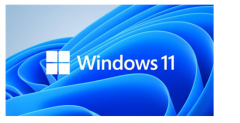|
交互式登录横幅值得吗?
普遍的共识是它们是,但旗帜应该说什么?
正在考虑的一些事情(没有特定的顺序):
>设备的所有权
>没有隐私的期望
>可以进行监测
>仅限授权使用
>不要使用像“欢迎”这样的词
>如果可能的话用当地语言
>横幅的长度:短而简洁,长而罗嗦
>不要识别设备的使用
>模糊或具体
从
Prosecuting Computer Crimes年开始,美国司法部的出版物:
Best Practices for Victim Response
and Reporting
A. Steps
Before Confronting an Intrusion
Consider Using Banners – Real-time
monitoring of attacks is usually
lawful,if prior notice of this
monitoring is given to all users. For
this reason,organizations should
consider deploying written warnings,
or “banners,” on the ports through
which an intruder is likely to access
the organization’s system and on which
the organization may attempt to
monitor an intruder’s communications
and traffic. If a banner is already in
place,it should be reviewed
periodically to ensure that it is
appropriate for the type of potential
monitoring that could be used in
response to a cyberattack. More
information on this topic can be found
on CCIPS’ website at
07001.
此外,以下是USDOJ推荐的一些NETWORK BANNER语言示例及其功能说明,从2002年起,美国司法部也是如此:
APPENDIX A: Sample Network Banner
Language
Network banners are electronic messages that provide
Notice of legal rights to users of
computer networks. From a legal
standpoint,banners have four primary
functions. First,banners may be used
to generate consent to real-time
monitoring under Title III. Second,
banners may be used to generate
consent to the retrieval of stored
files and records pursuant to ECPA.
Third,in the case of government
networks,banners may eliminate any
Fourth Amendment “reasonable
expectation of privacy” that
government employees or other users
might otherwise retain in their use of
the government’s network under
O’Connor v. Ortega,480 U.S. 709
(1987). Fourth,in the case of a
non-government network,banners may
establish a system administrator’s
“common authority” to consent to a law
enforcement search pursuant to United
States v. Matlock,415 U.S. 164
(1974).
这绝对是一个不容易被忽视的法律问题.更有可能的是,您应该咨询您的法律部门(如果有的话)或相应的决策者.此外,无论在横幅中实现什么,对于已经商定的网络使用政策而言,内部和外部所说的内容应该是多余的(可能不希望经常提醒人们他们已经同意的事情)
(编辑:ASP站长网)
|

 新win11系统能否建议
新win11系统能否建议 在windows环境下部署n
在windows环境下部署n Windows 10的任务管理
Windows 10的任务管理 盘点阿里巴巴 33 个开
盘点阿里巴巴 33 个开 消息称 Chrome 正开发
消息称 Chrome 正开发